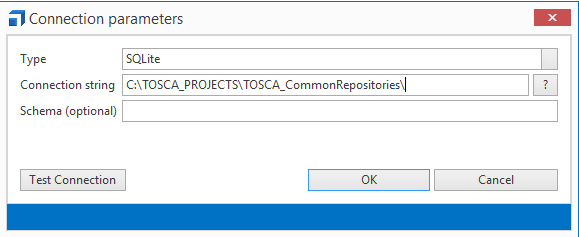As an administrator, you must backup and restore multi-user projects in admin mode (see chapter "Manage Projects and users").

|
The option Import/Export Subset is only available for backing up single-user workspaces. |
Create a backup of a project
If you create a backup of a project, the backup includes all objects, project settings and properties, and optionally versioning data (object history).
To create a backup of a project, follow the steps below:
-
Open the workspace as an admin user.
-
Select Info->Backup from the Project menu.
-
In the subsequent dialog, decide whether you want to include versioning history in the backup.
-
In the subsequent dialog, select the directory where you want to store the backup.
-
Click OK to create the backup. Tosca Commander automatically generates a file name for the backup with the extension .tdp.

|
The .tdp file requires approximately 20% of the repository disk space. |
Create a selective backup
If you create a backup of a ComponentFolder of a project, the backup includes all objects in the ComponentFolder, project settings and properties. The backup doesn't include versioning data.
To back up only a selected ComponentFolder in a project, follow the steps below:
-
Open the workspace as an admin user.
-
Right-click the ComponentFolder that you want to backup and select Backup Folder from the context menu.
-
In the subsequent dialog, decide whether Tosca Commander should check for external references of the objects within the ComponentFolder. External references cannot be backed up and result in broken references if you restore the backup.
-
Select No if you don't want Tosca Commander to check for external references. Continue with step 6.
-
Select Yes if you want Tosca Commander to check for external references. Continue with the next step.
-
-
Tosca Commander runs a search for external references of the objects within the ComponentFolder. Based on the result of the search, continue with one of the following options:
-
If Tricentis Tosca didn't find external references, click OK and continue with step 6.
-
If Tricentis Tosca found external references, continue with the next step.
-
-
Decide whether you want to cancel the backup to see all external references that Tricentis Tosca found during the reference check.
-
Click Yes to cancel the backup process. Tosca Commander lists the external references in a pop-up dialog. You can go back to the project and make modifications, i.e. move the referenced objects into the ComponentFolder. Once you are done with your changes, restart the backup process to create the backup.
-
Click No to proceed with the backup process anyway. Note that if you proceed, your backup file cannot contain the external references.
-
-
In the subsequent dialog, select the directory where you want to store the backup.
-
Click OK to create the backup.
Restore a project
To restore a project, you need create/drop rights.
Tricentis recommends to restore databases only on newly created repositories. If you restore the database in a repository that contains business data, this data is deleted. Tosca Commander displays a corresponding warning message and offers to cancel the process prior to restoring the database.

|
If you restore a .tdp file, you have to create new workspaces after you restore the project. If you access a workspace and receive an error message that the workspace repository and common repository don't match, create a new workspace to solve the issue. |
To restore a project, follow the steps below:
-
Start Tosca Commander. Do not open any workspaces.
-
In the Project menu, select Info->Restore.
-
In the subsequent dialog, select your preferred backup file.
-
In the subsequent dialog, specify the connection parameters for the common repository:
-
Type: select the database type.
-
Connection string: specify the unencrypted connection string for the database type.
For a detailed description of the supported database types and the corresponding connection strings, see chapter "Connecting Common Repositories".
-
-
Click OK to start the restore process.

